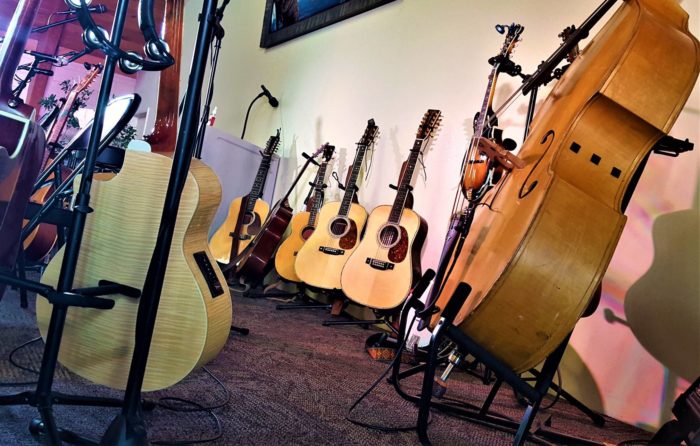What matters is if other people enjoy the show.
Please Remember:
The opinions expressed are mine only. These opinions do not necessarily reflect anybody else’s opinions. I do not own, operate, manage, or represent any band, venue, or company that I talk about, unless explicitly noted.

 Want to use this image for something else? Great! Click it for the link to a high-res or resolution-independent version.
Want to use this image for something else? Great! Click it for the link to a high-res or resolution-independent version.Job Type: Recurring concert series.
Venue: The South Valley Unitarian Universalist Society
Load-in: I couldn’t get my regular spot, because I was very early and a bunch of folks were there for another event. I did remember that using the stairs is a terrible option, and so I walked the gear around on the sidewalk instead. I felt much less tired afterwards – no data on any time differential, though. As happened for the previous LCS, I had setup help come in at exactly the right moment to cap things off.
Load-out: Many hands continue to make light work, and my new technique (which is to pack and load out progressively, rather than to pack everything first and then load everything out) feels pretty good. It might be faster, or it might not – although I’m pretty sure we set a load-out record on this go-around. I’m learning that LCS teardown is more about me managing the process than being hands-on with gear all the time.
What Went Well
- Working with old friends: The first act, Pat And Roy, were folks I remembered well from my Fats days. They know me, I know them, and both parties are aware of what the other party needs. Shows with people you’re acquainted with are like a good open-house gathering with a jam session attached; You get to be comfortable and enjoy yourself.
- Making new friends: Whenever an act says, “that was some of the best sound we ever had,” that’s a great feeling. It’s an especially great feeling when it’s your first day with that group. I will also say that it’s quite amazing how just getting the basics right (showing up, having your monitor rig tuned somewhat sanely, generally giving a hoot about the goings on) will get you a long way towards getting the “best sound ever” nod.
- Yes, you can do a big, bluegrass band unplugged: There were a LOT of instruments and open mics up on the deck for the second act, but there weren’t any real problems. We had a couple of short feedback chirps at one point, but nothing that had to be battled with over the course of the set. The key, of course, is a great band that knows how to be a band before a PA system gets added. All they needed was a bit of “fill” from monitor world, where the foldback blends gently with the acoustic output of the instruments. Screaming-hot monitor gain is the gateway to many problems, so not needing that kind of setup fixes lots of issues by way of prevention. The same goes for FOH, of course. There was no call to be ear-splittingly loud, especially because the basic blend was already there from the performers themselves.
What Could Have Been Better
- Why doesn’t this feel better than it does?: For all the good points of the show, I must admit that I spent my entire time at FOH with the sensation that I was struggling with it. In hindsight, I think that my real worry was how the overall sound of the show wouldn’t “clean up” to my liking. I was really keyed into all the room reflections I was hearing, while trying to be ginger with both volume and EQ. I eventually got to a pretty good place, but it took me a long time to get there – and even then, I didn’t feel that I had a truly crisp, defined mix going. (To be fair, I think the only person who was even a little bit unhappy was me, so…)
Conclusion
This was the close of my second season with the IAMA LCS, and I’m glad to be coming back on for a third round.